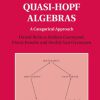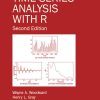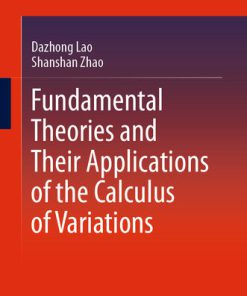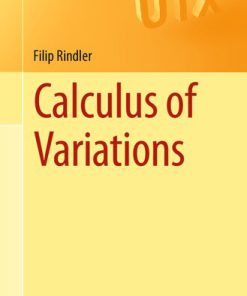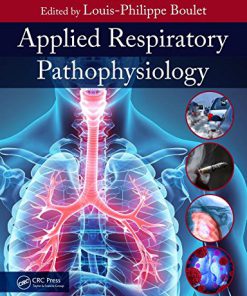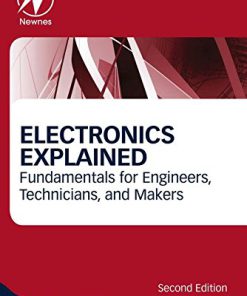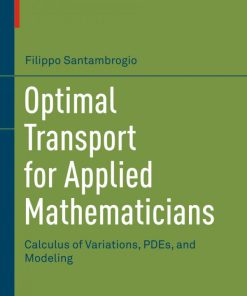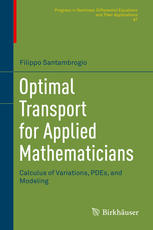Applied Calculus of Variations for Engineers Third edition by Louis Komzsik 9781000764758 1000764753
$50.00 Original price was: $50.00.$25.00Current price is: $25.00.
Applied Calculus of Variations for Engineers Third edition by Louis Komzsik – Ebook PDF Instant Download/Delivery: 9781000764758, 1000764753
Full dowload Applied Calculus of Variations for Engineers Third edition after payment
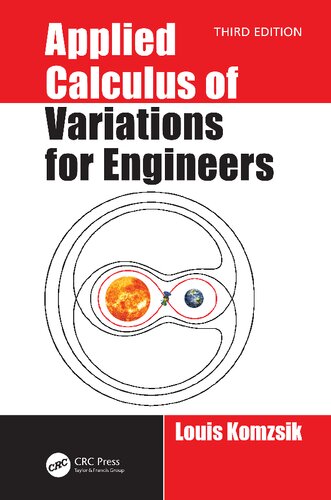
Product details:
• ISBN 10:1000764753
• ISBN 13:9781000764758
• Author:Louis Komzsik
Applied Calculus of Variations for Engineers, Third edition
Calculus of variations has a long history. Its fundamentals were laid down by icons of mathematics like Euler and Lagrange. It was once heralded as the panacea for all engineering optimization problems by suggesting that all one needed to do was to state a variational problem, apply the appropriate Euler-Lagrange equation and solve the resulting differential equation. This, as most all encompassing solutions, turned out to be not always true and the resulting differential equations are not necessarily easy to solve. On the other hand, many of the differential equations commonly used in various fields of engineering are derived from a variational problem. Hence it is an extremely important topic justifying the new edition of this book. This third edition extends the focus of the book to academia and supports both variational calculus and mathematical modeling classes. The newly added sections, extended explanations, numerous examples and exercises aid the students in learning, the professors in teaching, and the engineers in applying variational concepts.
Applied Calculus of Variations for Engineers Third Table of contents:
Part I: Mathematical foundation
1. The foundations of calculus of variations
1.1 The fundamental problem and lemma of calculus of variations
1.2 The Legendre test
1.3 The Euler–Lagrange differential equation
1.4 Minimal path problems
1.4.1 Shortest curve between two points
1.4.2 The brachistochrone problem
1.4.3 Fermat’s principle
1.4.4 Particle moving in a gravitational field
1.5 Open boundary variational problems
1.6 Exercises
2. Constrained variational problems
2.1 Algebraic boundary conditions
2.1.1 Transversality condition computation
2.2 Lagrange’s solution
2.3 Isoperimetric problems
2.3.1 Maximal area under curve with given length
2.3.2 Optimal shape of curve of given length under gravity
2.4 Closed-loop integrals
2.5 Exercises
3. Multivariate functionals
3.1 Functionals with several functions
3.1.1 Euler–Lagrange system of equations
3.2 Variational problems in parametric form
3.2.1 Maximal area by closed parametric curve
3.3 Functionals with two independent variables
3.4 Minimal surfaces
3.4.1 Minimal surfaces of revolution
3.5 Functionals with three independent variables
3.6 Exercises
4. Higher order derivatives
4.1 The Euler–Poisson equation
4.2 The Euler–Poisson system of equations
4.3 Algebraic constraints on the derivative
4.4 Linearization of second order problems
4.5 Exercises
5. The inverse problem
5.1 Linear differential operators
5.2 The variational form of Poisson’s equation
5.3 The variational form of eigenvalue problems
5.3.1 Orthogonal eigensolutions
5.4 Sturm–Liouville problems
5.4.1 Legendre’s equation and polynomials
5.5 Exercises
6. Analytic solutions
6.1 Laplace transform solution
6.2 d’Alembert’s solution
6.3 Complete integral solutions
6.4 Poisson’s integral formula
6.5 Method of gradients
6.6 Exercises
7. Approximate methods
7.1 Euler’s method
7.2 Ritz’s method
7.3 Galerkin’s method
7.4 Approximate solutions of Poisson’s equation
7.5 Kantorovich’s method
7.6 Boundary integral method
7.7 Finite element method
7.8 Exercises
Part II: Modeling applications
8. Differential geometry
8.1 The geodesic problem
8.1.1 Geodesics of a sphere
8.1.2 Geodesic polyhedra
8.2 A system of differential equations for geodesic curves
8.2.1 Geodesics of surfaces of revolution
8.3 Geodesic curvature
8.3.1 Geodesic curvature of helix
8.4 Generalization of the geodesic concept
9. Computational geometry
9.1 Natural splines
9.2 B-spline approximation
9.3 B-splines with point constraints
9.4 B-splines with tangent constraints
9.5 Generalization to higher dimensions
9.6 Weighting and non-uniform parametrization
9.7 Industrial applications
10. Variational equations of motion
10.1 Legendre’s dual transformation
10.2 Hamilton’s principle
10.3 Hamilton’s canonical equations
10.3.1 Conservation of energy
10.3.2 Newton’s law of motion
10.4 Lagrange’s equations of motion
10.4.1 Mechanical system modeling
10.4.2 Electro-mechanical analogy
10.5 Orbital motion
10.5.1 Conservation of angular momentum
10.5.2 The 3-body problem
10.6 Variational foundation of fluid motion
11. Analytic mechanics
11.1 Elastic string vibrations
11.2 The elastic membrane
11.2.1 Circular membrane vibrations
11.2.2 Non-zero boundary conditions
11.3 Bending of a beam under its own weight
11.3.1 Transverse vibration of beam
11.4 Buckling of a beam under axial load
11.4.1 Axial vibration of a beam
11.5 Simultaneous axial and transversal loading of beam
11.6 Heat diffusion in a beam
11.6.1 Dimensionless heat equation
12. Computational mechanics
12.1 The finite element technique
12.1.1 Finite element meshing
12.1.2 Shape functions
12.1.3 Element matrix generation
12.1.4 Element matrix assembly and solution
12.2 Three-dimensional elasticity
12.3 Mechanical system analysis
12.4 Heat conduction
12.5 Fluid mechanics
Solutions to selected exercises
Notations
References
Index
People also search for Applied Calculus of Variations for Engineers Third:
applied calculus vs calculus
is applied calculus hard
applied calculus examples
applied calculus pdf
applied calculus textbook
You may also like…
Engineering
Fundamental Theories and Their Applications of the Calculus of Variations 1st Edition Dazhong Lao
Mathematics
Engineering - Electrical & Electronic Engineering
Electronics Explained Fundamentals for Engineers Technicians and Makers Louis E. Frenzel Jr.
Computers - Networking
Science (General)
Cookbooks
Mathematics - Optimization. Operations Research


